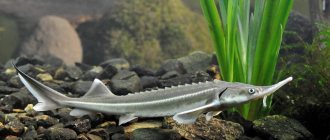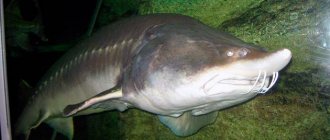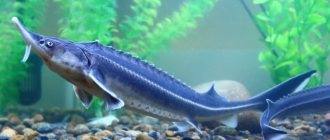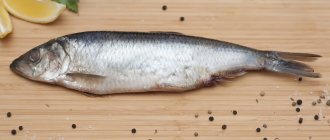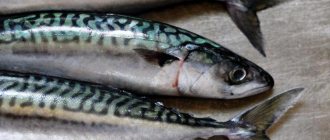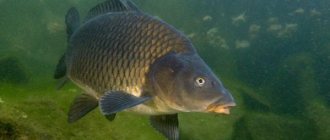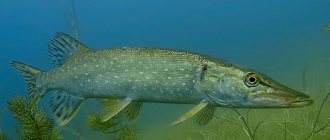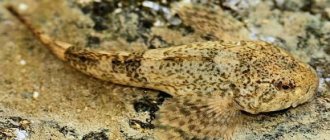Habitat
Beluga is an anadromous fish, that is, it lives in the seas, but rises to rivers to spawn. This species lives in the Caspian, Azov and Black Seas.
The most numerous is the Caspian population of beluga; it can be found everywhere in this sea. The main spawning site of the Caspian beluga is the Volga. Also, a small number of these fish go to spawn in the Ural, Kura and Terek rivers. A very insignificant number spawns in small rivers flowing into the Caspian Sea on the territory of Azerbaijan and Iran. But in general, it can be found in any river that is close enough to those places in the Caspian Sea where beluga fish are found.
In the past, spawning beluga entered rivers quite far - hundreds and even thousands of kilometers. For example, along the Volga it rose to Tver and even to the upper reaches of the Kama. However, due to the construction of numerous hydroelectric power stations on the rivers flowing into the Caspian Sea, modern belugas have to confine themselves only to the lower reaches.
Previously, the Azov beluga population was quite large, but today it is on the verge of extinction. From the Sea of Azov, fish rises to the Don and in very small quantities to the Kuban River. As in the case of the Caspian beluga, natural spawning grounds high upstream were cut off by the construction of a hydroelectric power station.
Finally, in the Black Sea, where the beluga fish lives, its population is also very small and concentrated mainly in the northwest of the sea, although cases of its appearance have been recorded off the coast of southern Crimea, the Caucasus and northern Turkey. For spawning, the local beluga swims in the three largest rivers of the region - the Danube, Dnieper and Dniester. Some individuals spawn in the Southern Bug. Before the construction of a hydroelectric power station on the Dnieper, beluga was caught in the Kyiv area and even in Belarus. The situation is similar with the Dniester. But along the Danube it can still rise quite far - right up to the Serbian-Romanian border, where one of the two Danube hydroelectric power stations is located.
Until the 70s. In the last century, beluga was sometimes caught in the Adriatic Sea, where it went to spawn in the Po River. However, in the last few decades, not a single case of beluga being caught in this region has been recorded, which is why the Adriatic beluga is considered extinct.
Beluga - description of fish
Beluga - sturgeon fish; considered the largest of all freshwater fish. In historical chronicles there are references of questionable authenticity to the catching of individuals up to 9 meters long and weighing up to 2 tons. However, those sources that do not raise doubts provide no less impressive figures.
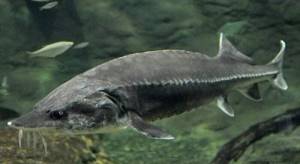
For example, a book on the state of Russian fisheries from 1861 mentions a beluga weighing 90 poods (one and a half tons), caught near Astrakhan in 1827. A reference book on freshwater fish in the USSR, published in 1948, mentions a female beluga weighing 75 pounds (more than 1,200 kg), which was caught in the Caspian Sea near the mouth of the Volga in 1922. Finally, everyone can personally see a stuffed one-color beluga displayed in the National Museum of the Republic of Tatarstan in the city of Kazan.
The latest case of catching such massive individuals was recorded in 1989, when a beluga weighing 966 kg was caught in the Volga delta. Her stuffed animal can also be seen in one of the museums, but in Astrakhan.
According to experts, the largest beluga fish should be tens of years old. It is possible that some individuals could be 100 years or more old. However, these are all exceptional cases. The average weight of fish that go to spawn in rivers is 90-120 kg for females and 60-90 kg for males. However, the beluga reaches even this size only at the age of 25-30 years. And immature young animals usually weigh no more than 20-30 kg.
If we leave aside the incredible size of this fish, then in general it has a typical sturgeon appearance. She has a massive, elongated, cylindrical body and a small, pointed nose. The beluga has a blunt, short snout and a large, crescent-shaped mouth. The mouth is bordered by a thick “lip”. The snout has wide, massive antennae.
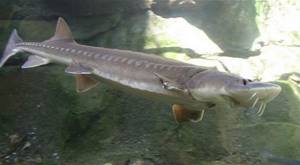
The head and body are dotted with symmetrical rows of bony scutes (the so-called bugs): 12-13 on the back, 40-45 on the sides and 10-12 on the belly. The dominant color in the beluga is gray, which covers the back, sides and top of the head. The underside of the beluga is white.
Varieties of bester
Bester is a fish whose breeding has already reached an industrial scale, but not all fishermen know that there are several varieties of bester. Among the types of bester present today, the following are distinguished:
- Burtsevsky is a hybrid formed by crossing a female beluga and a male sterlet, first bred in 1952. In appearance it looks more like a sterlet. Puberty in males occurs at the age of 4 years, and in females at 8 years. Widely used for making food black caviar.
- Aksai is a hybrid created by crossing a female sterlet and a male beluga, first bred in 1958. Outwardly, it is more similar to a sterlet, but is larger in size and weight. It is distinguished by early puberty, females reach maturity at three years, and males at the age of two years.
- Vnirovsky is a hybrid bred by crossing a male bester and a female beluga; it first appeared in 1958. Outwardly it resembles a beluga, larger in size than the Burtsevsky and Aksai bester. Sexual maturity occurs when males reach the age of 8 years and females at 14 years. It is characterized by several times greater fertility than other bester species.
Beluga behavior
The first thing mentioned in any description of beluga fish is its method of spawning. The main place of life of this fish is the sea, but it goes to large rivers to spawn, as was already mentioned earlier.
It is noteworthy that the beluga has so-called spring and winter forms (races). In particular, fish comes to the Volga in two waves: in the first half of autumn - winter, in the first half of spring - spring. However, this river is still dominated by the winter beluga, which spends the winter in river holes and then immediately begins spawning in April-May. In the Ural River, on the contrary, most belugas belong to the spring race; they spawn immediately after entering the river, and then swim back to the sea.
Like any sturgeon, beluga is a predatory fish. The young feed on all kinds of invertebrates and mollusks, catching them near the bottom in river mouths. After entering the open sea, the grown young animals quickly switch to feeding on fish. In the Caspian Sea, the basis of the beluga's diet is carp, roach, sprat, etc. In addition, the beluga does not hesitate to eat its own young and other representatives of the sturgeon family. The Black Sea beluga feeds mainly on anchovy and gobies.
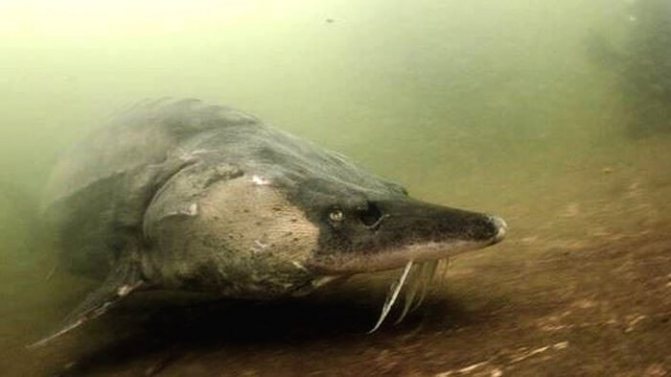
Beluga reaches sexual maturity late: males at 12-14 years, females at 16-18 years. Due to such a long maturation under conditions of intensive industrial fishing, this species was on the verge of extinction.
As already mentioned, beluga spawning occurs in the second half of spring, although a significant part of the fish go to rivers in the fall. Beluga spawns when the spring flood reaches its peak and the river water temperature is 6-7°C. Eggs rush on rapids in deep places (at least 4 meters, more often 10-12 m) with a rocky bottom. One female lays at least 200 thousand eggs, but usually they count in the millions (up to 8 million). The eggs are quite large, about 4 mm in diameter.
Having finished spawning, beluga fish in the Volga and other rivers quickly go to sea. Young larvae also do not stay in the river.
How to cook a whole sturgeon or sterlet
So that the fish turns out perfect
Sturgeon is a white delicious meat that allows you to treat it as you please: it is good to smoke, salt, fry, boil and bake. But besides these advantages, the sturgeon has one more thing - an amazing primitive appearance, which is no less striking than its tender flesh: a long nose, mustache, strange spines and bugs. That is why sturgeon, sterlet and other belugas have long graced both large and small feasts.
We learned how to cook a whole sturgeon or sterlet so that the fish makes the New Year's table as festive as possible from two chefs who do this very often.
The chef of the St. Daniel Monastery, Oleg Olkhov, and the chef of the Volna restaurant, Alexander Popov, tell the story.
Economic importance of beluga
Since ancient times it has been considered a commercial fish of high value. Active fishing has been going on since at least the 6th century BC. In the 20th century, with the development of industrial fishing methods, beluga fishing reached unprecedented proportions. For example, in the Volga alone in the 70s, 1.2-1.5 thousand tons of this fish were caught annually.
Unjustifiably intensive fishing of red beluga fish, as well as the construction of hydroelectric power stations everywhere in the rivers where it spawns, led to a sharp reduction in its numbers in the second half of the last century. Already in the early 90s, the catch dropped to 200-300 tons per year, and at the end of the decade - below 100 tons. In such conditions, the Russian authorities banned the industrial fishing of beluga sturgeon on their territory in 2000, and a decade later other countries of the Caspian region joined the Russian Federation. The situation is even worse in the Black and Azov Seas, where the beluga population has decreased to minuscule sizes.
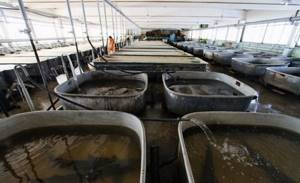
The virtual impossibility of ensuring supplies to the consumer market of meat and, no less important, beluga caviar has created conditions for the development of fish farms specializing in this type of fish. Today they are the only legal suppliers of this type of product to store shelves. However, poaching, unfortunately, also occupies a significant share of this market.
In fish hatcheries, beluga is bred not only and not so much in its natural form, but rather hybridizes with other sturgeon - sterlet, stellate sturgeon and sturgeon. Bester, a fish resulting from crossing beluga and sterlet, has become especially widespread. It is not only grown in pond farms, but is even introduced into the Sea of Azov and freshwater reservoirs.
Beluga in cooking
Beluga meat and especially its caviar are considered a true delicacy, from which you can prepare a real culinary masterpiece. This fish is subjected to all types of heat treatment: boiled, fried, baked, steamed and grilled. Beluga is also smoked, cut and canned. Beluga meat can be used to prepare a variety of types of dishes, including kebabs and salads.
With all this, beluga as a fish is very good for health. It has low calorie content and high content of easily digestible protein. Beluga contains many essential amino acids, which are urgently needed by our body, but are not synthesized in it, and can only be obtained from food. The meat of this fish contains a lot of calcium and phosphorus, which help restore and strengthen bones, as well as improve the condition of nails and hair. The potassium present in beluga improves the functioning of the heart muscle, and iron has a beneficial effect on the composition of the blood.

Beluga meat is rich in vitamin A, which affects visual acuity and skin condition. It also contains other important vitamins: B (important for muscles and nerve tissue), D (prevents the development of rickets and osteoporosis).
Separately, it is worth mentioning beluga caviar. Females lay large black eggs, which are incredibly highly prized by gourmets. Since industrial fishing of beluga is prohibited today, and in aquaculture it takes about 15 years to grow the fish to get caviar from it, the cost of this product reaches exorbitant prices. In Russia, 100 grams of beluga caviar costs about 10-20 thousand rubles, a kilogram - up to 150 thousand rubles. In Europe and other markets, the cost of a kilogram of this caviar ranges from 7-10 thousand dollars. Obviously, it is impossible to purchase such caviar in a regular store.
Features of the structure of the head
The shape of the head and nose is the next characteristic feature, by which one can also determine how the sturgeon differs from the sterlet. The photo will help you see the differences clearly. Take a closer look: the sterlet’s nose is long and pointed, its head is narrow and small compared to its body. In addition, this fish has fringed whiskers.
For most sturgeons, everything is different: the nose is shorter, the head is larger and wider. Fishermen also say that the sterlet has a special look, as if surprised or naive. The sturgeon looks differently - as if more confident. Of course, we are not talking about character and not about the fact that you can read a fish’s thoughts by looking at them. This phenomenon is due solely to the structural features of the skull.
